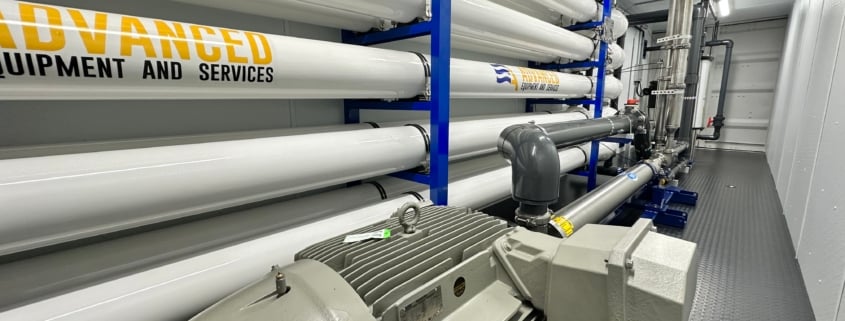The Best Desalination Machine
Water scarcity is a global challenge, and as populations grow, finding sustainable solutions becomes increasingly vital. Desalination, the process of converting seawater into freshwater, has emerged as a promising technology. In this comprehensive guide, we delve into the benefits of a desalination machine, exploring how this innovative technology addresses water scarcity and provides a reliable source of fresh water for communities around the world.
The primary benefit of a desalination machine is its ability to tap into an essentially limitless supply of seawater. With approximately 97% of Earth’s water residing in oceans, desalination unlocks the potential to convert seawater into freshwater, mitigating water scarcity in regions facing acute shortages.
Desalination provides a crucial strategy for diversifying water sources. In arid or water-stressed regions, dependence on traditional freshwater sources like rivers and aquifers may not be sustainable. A desalination machine offers a reliable alternative, reducing reliance on finite freshwater reservoirs.
Desalination machines contribute to the stability of water supply by being resilient to climate variability. Unlike traditional water sources that may be susceptible to droughts or changes in precipitation patterns, desalination offers a consistent and independent supply unaffected by weather fluctuations. The ability to operate year-round ensures water security for communities. Desalination machines provide a dependable source of freshwater regardless of seasonal variations, helping communities overcome the challenges posed by unreliable rainfall patterns.
Alleviating Pressure on Freshwater Ecosystems
Utilizing desalination helps alleviate pressure on freshwater ecosystems. With growing demands for water, ecosystems such as rivers and lakes often face over-extraction. Desalination offers a sustainable solution by tapping into the vast and underutilized seawater reserves. In coastal areas, over-extraction of freshwater from aquifers can lead to saltwater intrusion, compromising the quality of available freshwater. Desalination machines mitigate this issue by directly sourcing seawater, preventing further degradation of coastal aquifers.
Technological advancements in desalination have led to increased energy efficiency. Modern desalination machines employ innovative techniques, such as reverse osmosis and forward osmosis, optimizing energy consumption and making the process more sustainable. Ongoing research and development in desalination technologies have resulted in cost reductions. As the efficiency of desalination machines improves and the costs associated with infrastructure and energy consumption decrease, desalination becomes a more economically viable solution. Addressing the environmental impact of brine discharge is a priority. Ongoing research focuses on developing efficient brine management solutions, including dilution techniques, beneficial reuse, and eco-friendly disposal methods, ensuring minimal disruption to marine ecosystems.
A significant stride in enhancing the environmental sustainability of desalination involves integrating renewable energy sources. As technology advances, desalination plants can increasingly harness solar and wind power, minimizing reliance on conventional energy grids and reducing carbon footprints.
Empowering Communities for Water Security
Desalination machines play a crucial role in emergency response and humanitarian aid efforts. In the aftermath of natural disasters or regions facing acute water shortages, portable desalination units can provide immediate relief by producing freshwater from nearby seawater sources.
Additionally, desalination contributes to community health by providing a consistent source of safe and clean drinking water. In regions prone to waterborne diseases due to contamination of traditional water sources, desalination acts as a preventive measure, safeguarding public health
Public awareness and education are crucial components of successful desalination projects. Involving local communities in decision-making processes, addressing concerns, and providing education on the benefits and challenges of desalination build support for sustainable water solutions. Additionally, desalination should be complemented by advocacy for responsible water use. Encouraging water conservation practices and promoting sustainable agricultural and industrial water management contribute to overall water resilience.
The future of desalination holds exciting prospects with ongoing technological innovations. Researchers are exploring novel materials, improved desalination processes, and alternative energy sources to make desalination even more efficient and sustainable. Integrating desalination with renewable energy sources, such as solar and wind power, is a promising avenue for reducing the environmental footprint of desalination machines. This synergy aligns with global efforts to transition towards cleaner and sustainable energy solutions.
The Best Desalination Machine: Summary
In conclusion, the benefits of a desalination machine extend far beyond providing freshwater; they offer a pathway to resilience, sustainability, and global collaboration in addressing water scarcity. As technology continues to evolve, and communities become increasingly aware of the importance of water management, desalination stands as a beacon of hope in navigating the waters of possibility for a more water-secure future. With careful planning, responsible implementation, and ongoing advancements, desalination machines are poised to play a pivotal role in ensuring access to clean and reliable water for generations to come.



